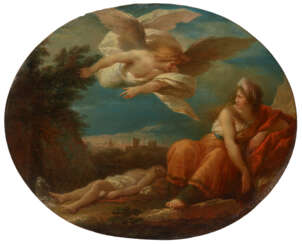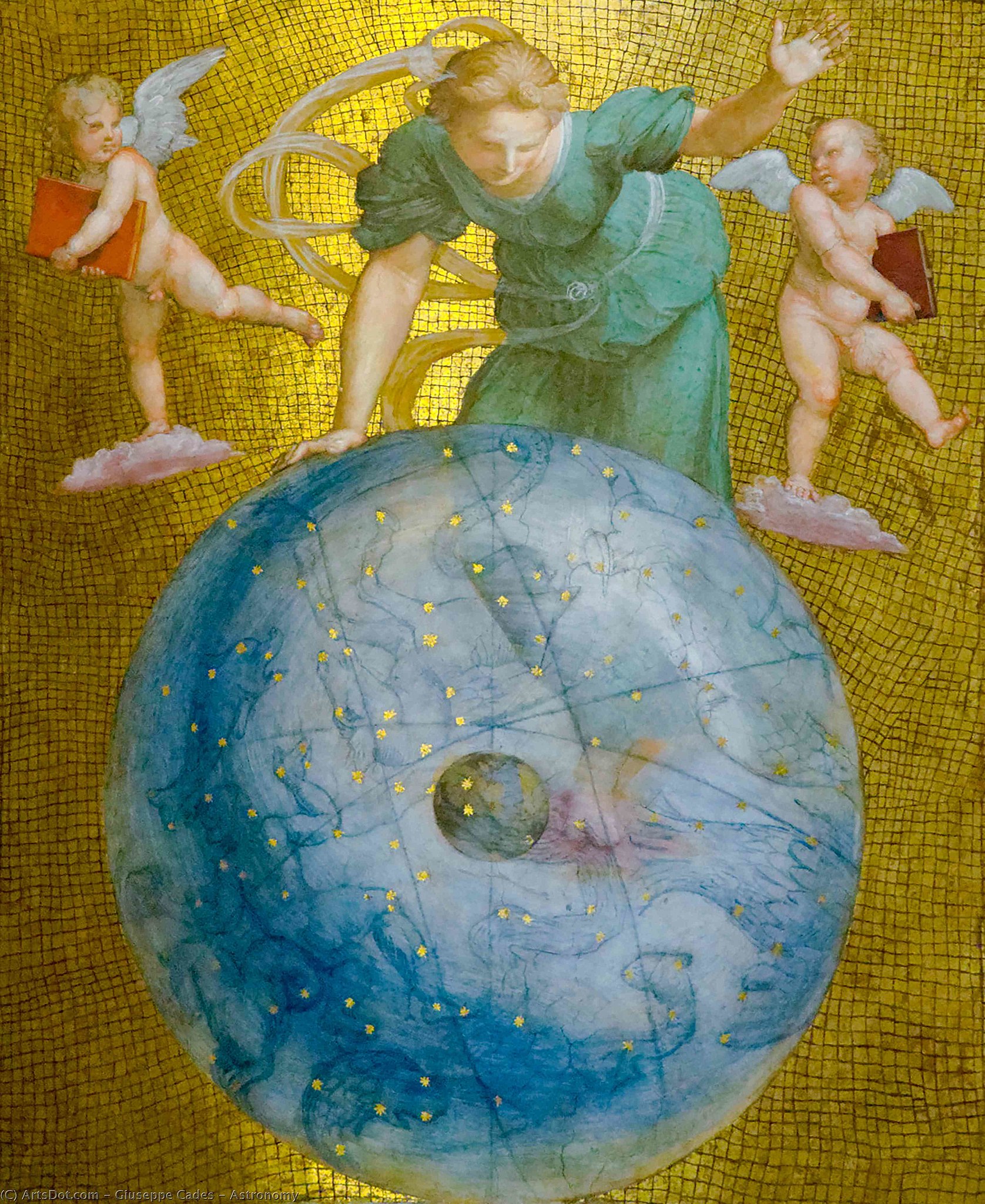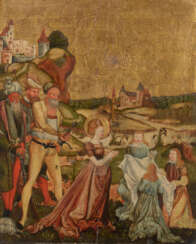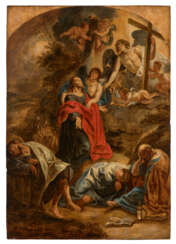религиозные картины
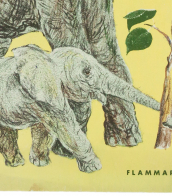


Quentin Matsys (Dutch: Quinten Matsijs), a Flemish painter born around 1466 in Leuven, is recognized as a pivotal figure in the Early Netherlandish tradition and a founder of the Antwerp school of painting. His initial training as an ironsmith in his father's workshop lent a unique craftsmanship to his artistic endeavors. Matsys' works, which often contained religious themes and satirical elements, were instrumental in the transition from medieval to Renaissance art in northern Europe.
Matsys' early works exhibit the influence of Hans Memling, and later, his exposure to Italian Renaissance artists, especially Leonardo da Vinci, is evident in his refined technique. This amalgamation of Northern European and Italian influences resulted in a distinctive style that earned him the reputation as the leading painter in Antwerp during the early 16th century.
Today, Matsys' masterpieces are housed in prestigious institutions like the National Gallery in London, serving as a testament to his enduring legacy. His contributions to the art world resonate with collectors and historians alike, who admire his innovative blend of technical skill and evocative expression.


Jan Gossaert was a French-speaking painter from the Low Countries also known as Jan Mabuse (the name he adopted from his birthplace, Maubeuge) or Jennyn van Hennegouwe (Hainaut), as he called himself when he matriculated in the Guild of Saint Luke, at Antwerp, in 1503. He was one of the first painters of Dutch and Flemish Renaissance painting to visit Italy and Rome, which he did in 1508–09, and a leader of the style known as Romanism, which brought elements of Italian Renaissance painting to the north, sometimes with a rather awkward effect. He achieved fame across at least northern Europe, and painted religious subjects, including large altarpieces, but also portraits and mythological subjects, including some nudity.


Salomon van Ruysdael was a Dutch Golden Age landscape painter. He was the uncle of Jacob van Ruysdael.


Luca Giordano, born on October 18, 1634, in Naples, emerged as the most celebrated Neapolitan painter of the late 17th century, known for his quick workmanship, which earned him the nickname "Luca Fa Presto" from his father's frequent admonitions to work quickly. His profound contribution to the development of Italianate landscape painting marked a significant chapter in art history.
Giordano's works are celebrated for their dynamic compositions, vibrant color palette, and the ability to infuse his subjects with vitality and emotion. His prolific career saw him working across Italy and Spain, leaving behind a legacy that includes monumental works such as the frescoes in the Palazzo Medici-Riccardi in Florence and the ceiling paintings in Santa Brigida Church in Naples. His late works, lighter and prefiguring the Rococo movement, were particularly influential and admired by later artists such as Fragonard.
Giordano's artistic prowess was not confined to a single genre; his oeuvre includes religious and mythological scenes, landscapes, and portraits. His versatility and ability to adapt his style to suit different subjects and patrons' preferences made him a pivotal figure in the transition from the Baroque to the Rococo style. Despite criticisms of superficiality due to his rapid execution, Giordano's work was fundamentally rooted in a deep understanding of his predecessors, combining the dramatic intensity of the Baroque with the emerging lighter Rococo aesthetic.
For collectors and experts in art and antiques, Luca Giordano's paintings represent a significant period in art history, bridging the gap between two major stylistic periods and reflecting the vibrant cultural exchanges of 17th-century Europe. His works, found in esteemed collections worldwide, continue to be studied and admired for their technical brilliance and artistic innovation.
To explore more about Luca Giordano's masterful contributions to the world of art and to stay updated on exhibitions or sales featuring his work, consider signing up for updates from art institutions. This subscription ensures enthusiasts and collectors are well-informed about developments related to Giordano's oeuvre, enhancing their appreciation and understanding of his enduring legacy.


Lucas Gassel was a Flemish Renaissance landscape painter.
Gassel was a humanist, socialized with other humanists in the Netherlands, and was a well-known and successful artist. Gassel's extant paintings depict distant landscapes, often with famous episodes from the Bible depicted in the foreground, such as the Escape to Egypt, or characters from classical mythology, such as Pyramus and Thebes. His drawings and engravings with scenes from court and everyday life are also well known.

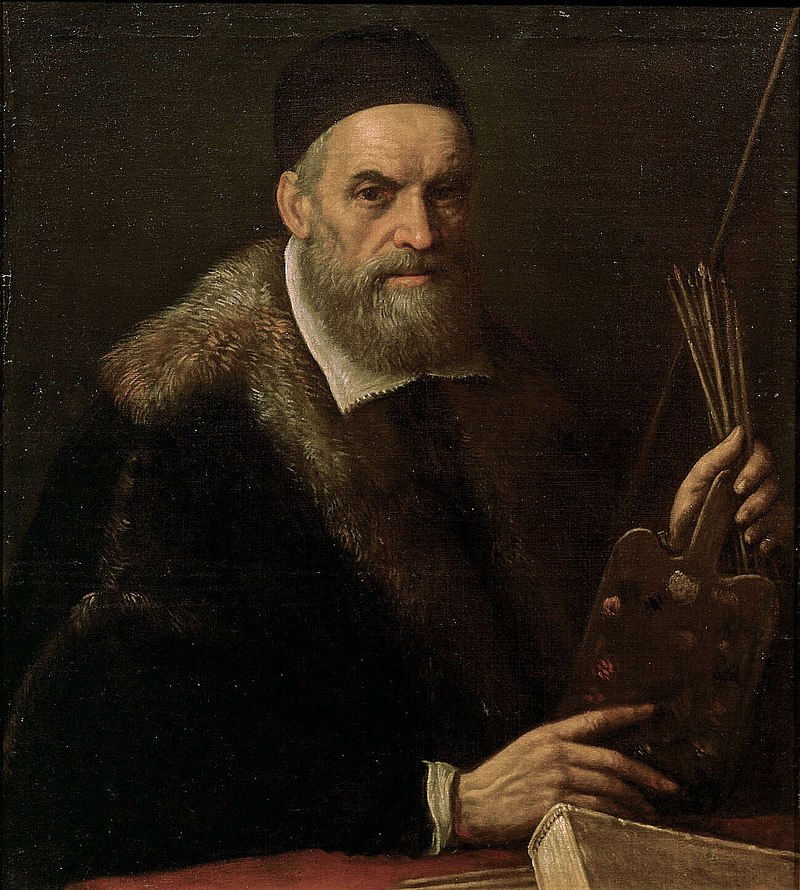
Jacopo Bassano, known also as Jacopo dal Ponte, was an Italian painter who was born and died in Bassano del Grappa near Venice, and took the village as his surname. Trained in the workshop of his father, Francesco the Elder, and studying under Bonifazio Veronese in Venice, he painted mostly religious paintings including landscape and genre scenes. He often treated biblical themes in the manner of rural genre scenes, portraying people who look like local peasants and depicting animals with real interest. Bassano's pictures were very popular in Venice because of their depiction of animals and nocturnal scenes. His four sons: Francesco Bassano the Younger, Giovanni Battista da Ponte, Leandro Bassano, and Girolamo da Ponte, also became artists and followed him closely in style and subject matter.






Willem van Herp was a Flemish Baroque painter specializing in religious paintings and small cabinet paintings of "low-life" genre scenes. He operated a large workshop and through his good connections with Antwerp art dealers helped spread the Flemish Baroque style internationally.


Leonardo da Vinci was an Italian polymath of the High Renaissance, celebrated as a painter, draughtsman, engineer, scientist, theorist, sculptor, and architect. His remarkable abilities and innovative thinking made him an epitome of the Renaissance humanist ideal. Born in Vinci, near Florence, in 1452, Leonardo was educated in Florence by Andrea del Verrocchio, a renowned painter and sculptor. He began his career in Florence, later working in Milan, Rome, and France, where he died in 1519.
Da Vinci is revered for his artistic mastery, technological innovation, and scientific inquiry. Despite having fewer than 25 major works attributed to him, including several unfinished ones, his influence on Western art is profound. His magnum opus, the "Mona Lisa," housed in the Louvre Museum, Paris, is considered the world's most famous painting. "The Last Supper," his most reproduced religious painting, showcases his mastery of dramatic narrative and pictorial illusionism. Both paintings exhibit Leonardo's unique ability to convey complex human emotions and his innovative use of techniques like sfumato and chiaroscuro.
Leonardo's interests extended far beyond fine art. He was a visionary in multiple fields, including anatomy, physics, architecture, and mechanics. His notebooks reveal designs for machines like bicycles, helicopters, and military tanks, centuries ahead of their time. However, due to his diverse interests, he left many projects and paintings incomplete. Leonardo's final years were spent in France, where he continued his artistic and scientific pursuits until his death.
For collectors and experts in art and antiques, Leonardo da Vinci remains a figure of endless fascination. His works not only embody the pinnacle of Renaissance art but also provide insights into the era's scientific and philosophical inquiry. To stay updated on new sales and auction events related to Leonardo da Vinci, sign up for our newsletter. This subscription is a gateway to exploring the rich legacy of this unparalleled artist and inventor.


Alessandro Gherardini was an Italian painter of the Baroque period, active mainly in Florence. He was the pupil of the painter Alessandro Rosi. In Florence, he painted a Crucifixion for the Monastery of the Augustines adjacent to Santa Maria dei Candeli; and frescoes from the Life of St. Anthony for the Convent of San Marco. He painted frescoes on the Life of Alexander the Great for Casa Orlandini. He is described as a competitor for commissions in Florence with Anton Domenico Gabbiani. Among Gherardini's pupils was Sebastiano Galeotti, who later moved to Genoa.


Leonard Bramer, Leonaert Bramer or Leendert Bramer, war a Dutch painter best known for his genre, religious, and historical paintings.


Jacob Jordaens was a Flemish painter, draughtsman and tapestry designer known for his history paintings, genre scenes and portraits. After Peter Paul Rubens and Anthony van Dyck, he was the leading Flemish Baroque painter of his day. Unlike those contemporaries he never travelled abroad to study Italian painting, and his career is marked by an indifference to their intellectual and courtly aspirations. In fact, except for a few short trips to locations elsewhere in the Low Countries, he remained in Antwerp his entire life. As well as being a successful painter, he was a prominent designer of tapestries.
Like Rubens, Jordaens painted altarpieces, mythological, and allegorical scenes, and after 1640 — the year Rubens died — he was the most important painter in Antwerp for large-scale commissions and the status of his patrons increased in general. However, he is best known today for his numerous large genre scenes based on proverbs in the manner of his contemporary Jan Brueghel the Elder, depicting The King Drinks and As the Old Sing, So Pipe the Young. Jordaens' main artistic influences, besides Rubens and the Brueghel family, were northern Italian painters such as Jacopo Bassano, Paolo Veronese, and Caravaggio.



![[Толстой, Л.Н. Анна Каренина: в 2 т]. Tolstoy, L. Anna Karenin: [in 2 v.] / by Leo Tolstoy; translated by Constance Garnett.](/assets/image/picture_1793598/7344f/f2exv6lruhunazagllyml9mp2zwhk3sizyarl8dpgc-jdmctkkvpl-lxv-nbvtl1635871025jpg__fix_374_244.jpeg)
![[Толстой, Л.Н. Анна Каренина: в 2 т]. Tolstoy, L. Anna Karenin: [in 2 v.] / by Leo Tolstoy; translated by Constance Garnett.](https://veryimportantlot.com/assets/image/picture_1793598/7344f/f2exv6lruhunazagllyml9mp2zwhk3sizyarl8dpgc-jdmctkkvpl-lxv-nbvtl1635871025jpg__fix_374_244.jpeg)
![Тейлор, Э.Б. Антропология: (Введение к изучению человека и цивилизации) / [Соч.] Эд. Б. Тайлора; пер. с англ. [и предисл.] д-ра И.С. Ивина.](/assets/image/picture_1913547/bf0af/oyavj6tzwtxqw15cuenxecjatlc3beexzq-axm5p1vja0u26j5iwblmvusufmzy1640037960jpg__fix_374_244.jpeg)
![Тейлор, Э.Б. Антропология: (Введение к изучению человека и цивилизации) / [Соч.] Эд. Б. Тайлора; пер. с англ. [и предисл.] д-ра И.С. Ивина.](https://veryimportantlot.com/assets/image/picture_1913547/bf0af/oyavj6tzwtxqw15cuenxecjatlc3beexzq-axm5p1vja0u26j5iwblmvusufmzy1640037960jpg__fix_374_244.jpeg)





















